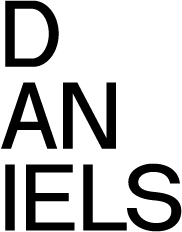Design Technologies
ARC3018HF (LEC0103)
Instructor: Humbi Song
“We shape our tools, and thereafter the tools shape us”
- John M. Culkin (referring to Marshall McLuhan)
"The theory of embodied cognition can provide HCI practitioners and theorists with new ideas about interaction and new principles for better designs. I support this claim with four ideas about cognition: (1) interacting with tools changes the way we think and perceive -- tools, when manipulated, are soon absorbed into the body schema, and this absorption leads to fundamental changes in the way we perceive and conceive of our environments; (2) we think with our bodies not just with our brains; (3) we know more by doing than by seeing -- there are times when physically performing an activity is better than watching someone else perform the activity, even though our motor resonance system fires strongly during other person observation; (4) there are times when we literally think with things. These four ideas have major implications for interaction design, especially the design of tangible, physical, context aware, and telepresence systems."
- David Kirsch, “Thinking with the Body” (referring to embodied cognition)
This studio takes a body-centric and embodied cognition approach to understanding how we interact with technological tools used in the process of designing the built environment, and how we interact with architecture and the built environment around us after it is fabricated. It will include a research component and a making component; students will (1) propose a conceptual framework and custom-made design technologies workflow, which then (2) they will realize as physically fabricated case study prototypes, or as a spatial interactive installation.
The human creative processes are often exploratory, iterative, and open-ended; existing literature in design research has shown that the creative process involves revisiting earlier stages, remixing ideas, and evolving concepts. Charles Eastman in 1969 studied how architects and designers work under conditions of uncertainty, where designers rarely follow a predetermined path but instead, navigate ill-defined problems by shifting between abstract goals, partial solutions, and evolving constraints. Building upon this, Donald Schön (1983) used the concept of reflection-in-action and reflection-on-action to describe how practitioners think through making, adapting their ideas in real-time where each move invites a response informing the next steps.
Digital fabrication tools and computational tools (i.e. CAD, Rhino, Grasshopper, AI, AR/VR, algorithms, data, simulations, biometric wearables, sensors, digital fabrication, kinetic modules, etc.) intersect at key moments of this discursive design process, as actors within a network that includes designers, stakeholders, systems, environment, and social contexts. The intersection necessarily causes friction, sometimes beneficial and sometimes detrimental, due to the embedded assumptions and implied workflows within the technology tools themselves. As one example, if a designer were to do 3D modeling and design brainstorming through Rhino as opposed to Blender, they will end up with different designs even if starting with the same idea because of the tendencies of each of those software and the decisions made by the design software and interface designers. As another example, today’s commercially popular AI tools as assuming a predominantly linear workflow, operating on a direct input-output mechanism; users provide prompts, typically as text/images, and receive fully formed outputs as “one-click” solutions. This emphasis on efficiency can come in conflict with the exploratory and discursive nature of how humans design, and we as a discipline need a better understanding of in what ways specific tools may be inserted into the design process.
This studio will be appropriate for any students interested in the intersection of creative design process and technology, and will support a wide variety of student thesis research interests in fabrication, design technologies, and digital software, etc. Thus, this studio explores new paradigms of interaction between human designers and design technologies, with a particular focus on how these tools intersect with each person’s own design workflows, fabrication, and embodied making.

